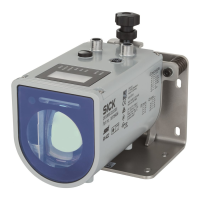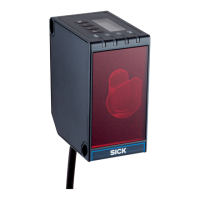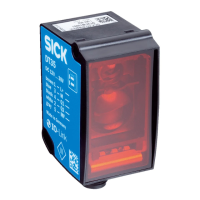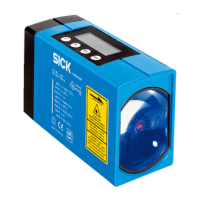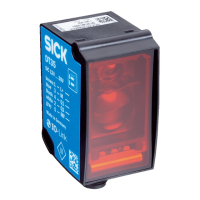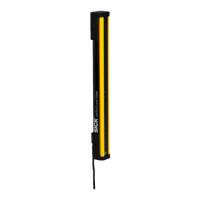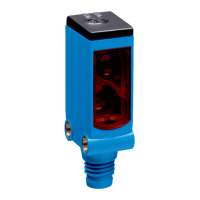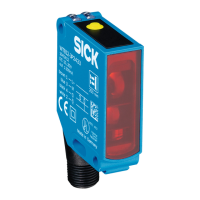•
Index 105 (0x69) “Process data resolution”
•
Index 107 (0x6b) “Process data standardization offset”
•
Index 109 (0x6d) “All process data” (acyclical reading of the process data)
•
Index 120 (0x78) “IO-Link process data” (process data structure)
6.4.9.6 Timer function
The timer function can be used to determine how long output Q
1
is active. This can be
used, for example, to measure the time for which an object is in the sensor's detection
range. The timer function can be used with all switching functions of output Q
1
.
The timekeeping is started each time when output Q
1
changes over from an inactive
to an active state. The timekeeping is stopped when output Q
1
changes over from an
active to an inactive state. After the timekeeping has been ended, the measured time
can be read out via the process data using IO-Link.
The measured time is output in milliseconds. The accuracy of the timer is affected
by the sensor's speed settings (response time, depth of the bit filter). The longest
measurable time span is 65,535 milliseconds (65.5 seconds).
Available under
SOPAS ET:
•
“Advanced settings” page (configuring the process data)
•
“Main settings & visualization” page (display of the measured time)
IO-Link:
•
Index 120 (0x78) “IO-Link process data” (process data structure)
•
Index 109 (0x6d) “All process data” (acyclical reading of the process data)
For the settings for switching output Q
1
see "Switching mode for Q
1
(“ModeQ
1
”)",
page 22.
6.4.9.7 Signal level and signal quality
Signal level (“SL”)
The signal level corresponds to the amount of light received by the sensor's receiver
optics. This is a dimensionless value. It essentially depends on the distance from the
measuring object and on the surface of the measuring object (color, roughness/reflec‐
tivity, angle to the optical axis).
To enable the sensor to measure the distance correctly, the signal level must not drop
below a certain value. This value depends on the selected speed.
Signal level warning (“Warning (SLW)”)
A warning can be output via switching outputs Q
1
and Q
2
if the signal level drops below
a certain value. This value can either be specified as a number value or determined
by the “Teach” function. When the “Teach” function is used, the threshold value for
outputting the warning is calculated by reducing the measured signal level value by
about 12%. Then the warning will not be output until the signal level is about 12% lower
than it was at the time it was taught in.
Signal quality (“SQ”)
The signal quality indicates the stability of the measurement. A meaningful value is
output only if the distance between the sensor and the measuring object is constant.
OPERATION 6
8017154/1AVV/2021-03-24 | SICK O P E R A T I N G I N S T R U C T I O N S | DT50-2 Pro
71
Subject to change without notice
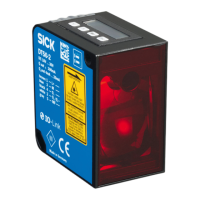
